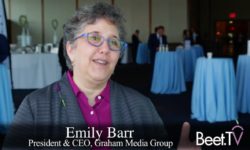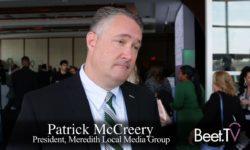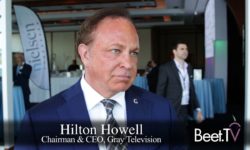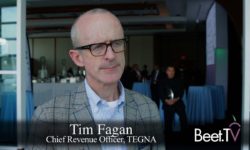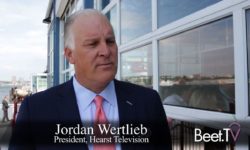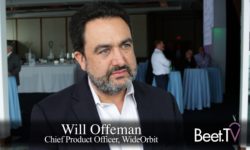For many people, driving a journey in the car is the last refuge of solitude and focus, away from the hum of modern screens and information overload.
But that may be about to change, as a host of companies aims to serve up more content and more ads to a next generation of motorist it thinks may be more passenger than driver.
In this video interview with Beet.TV, Bryan Biniak of Connected Travel, a company bringing a voice interface in to cars so that drivers can buy things whilst driving, says in-car TV experiences until now have largely focused on kids’ entertainment screens – but that will change as autonomous driving widens the potential audience to more adults.
“Especially with the millions of drivers that are out there in the gig economy for rideshare and fleet,” he says. “These are the people that are going to be able to watch either while they’re waiting to do a pickup or while the car is driving itself.”
MediaLink’s Michael Kassan also recently imagined a future in which autonomous cars, freeing drivers of the need to concentrate on the road, will increase content consumption whilst driving.
It’s not just content, of course. In business circles, there is a groundswell of hope that the same new screen opportunity can be used by advertisers.
“It’s contextual,” Biniak adds. “We know where people are going, we know what’s around them, so everything can be tuned to (them):
Schedule: “It’s routine time so you can reliably schedule that connection. Forty-five percent of the time people are in the car, they’re going to buy something. Most people, when they’re in the car, they follow routines – to and from work, to and from school. They shop at the same places
Location: “You’re able to capture information about where they go, how long they stay, what’s around those locations from a co-location standpoint. And so you start to learn about the consumption habits.”
ACR: “In a car, it’s possible to capture what people hear. We know when the radio’s off and on, we know the station ID, the station frequency, when people change the channels. With programme automation information, you know what they’ve heard in the past, what they’re hearing now, what they’ll hear in the future.”
Out-of-home: “Billboards are all tied to location. So we know the billboards and ads that they’re seeing there.”
TV: “When you connect it into TV and the ads that they hear there, that gives a very clear sense of these people that are driving in their cars and consuming every day, what they’ve heard or what they’ve seen, and how that impacts purchases.”
This interview was conducted by Janus Insights & Strategy president Howard Shimmel.
The interview took place at the at the TVB Forward conference in New York. The series is sponsored by WideOrbit.






